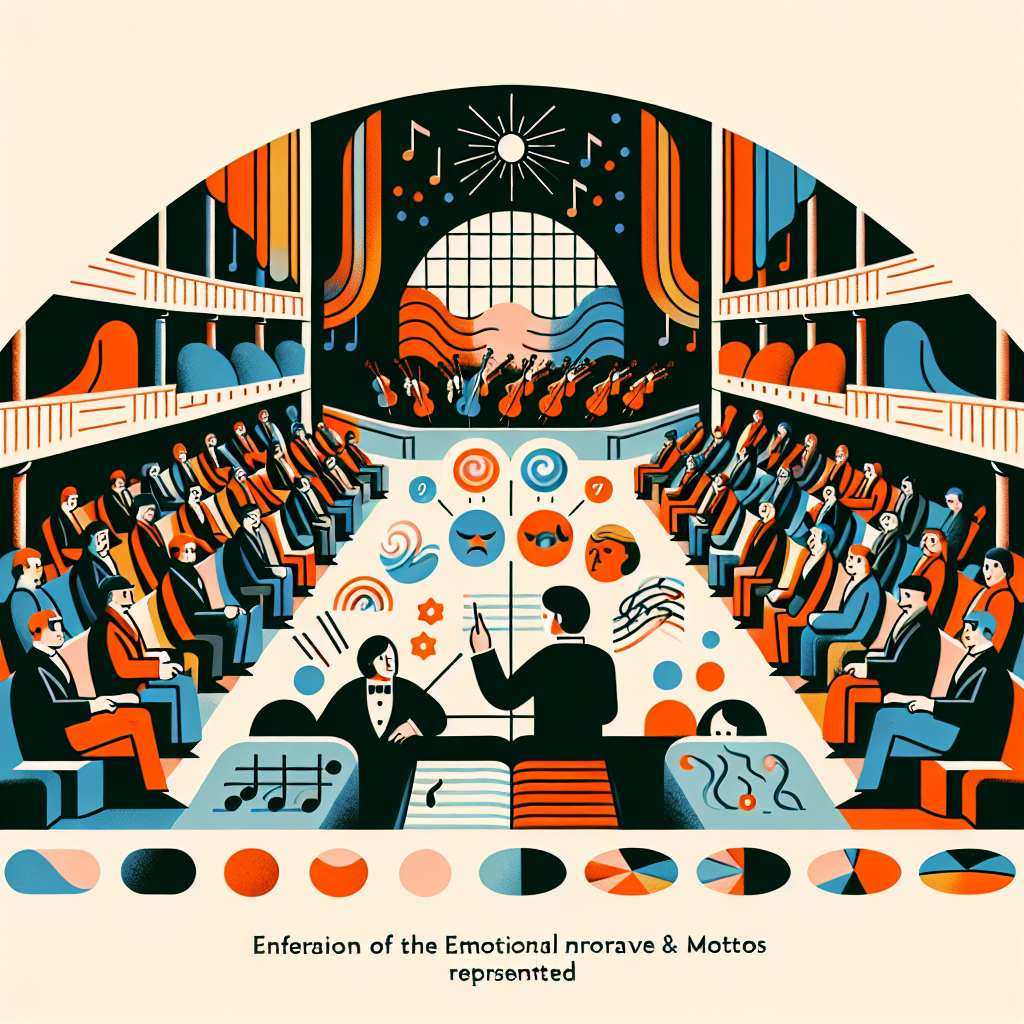
The Underlying Narratives in Beethoven’s Concertos
Ludwig van Beethoven, born on December 17, 1770, in Bonn, Germany, remains one of the most influential composers in the western classical music tradition. Even by his early thirties, Beethoven had already left an indelible mark on the musical landscape with his innovative and emotionally charged compositions. Among his many celebrated works, his concertos stand out as key examples of his genius. Unveiling the underlying narratives in these concertos offers a glimpse into Beethoven’s artistic vision and the sociopolitical context of his time. This exploration will take you through the fascinating journey of Beethoven’s development as a composer, the creative process behind his concertos, and the stories each piece tells.
Often referred to as a visionary, Beethoven pushed the boundaries of classical music, incorporating a depth of emotion and complexity that was unprecedented. His concertos for piano, violin, and orchestra are masterpieces that showcase not only his technical prowess but also his ability to communicate profound thematic narratives. From the elegance of his early works to the dramatic power of his later pieces, Beethoven’s concertos are a reflection of his life experiences, artistic ambitions, and philosophical beliefs.
Early Life and Musical Influences
To understand the narratives embedded in Beethoven’s concertos, we must first examine his early life and the influences that shaped his musical identity. Growing up in a family of musicians, Beethoven was exposed to a rich musical heritage from a young age. His father, Johann van Beethoven, was a court musician and a stern teacher who recognized Ludwig’s prodigious talent. Though Johann’s methods were often harsh, they instilled a profound sense of discipline and a deep understanding of music in young Ludwig.
Beethoven’s early exposure to the works of classical giants like Johann Sebastian Bach, Wolfgang Amadeus Mozart, and Joseph Haydn played a crucial role in his development as a composer. He not only studied their compositions but also absorbed their techniques, which became the foundation of his own style. Beethoven’s move to Vienna in 1792 marked a pivotal point in his career. Vienna was the epicenter of classical music, and it was here that Beethoven’s talent truly began to flourish. He studied under Haydn and gained the patronage of influential aristocrats, which provided him the platform to experiment and hone his craft.
Beethoven’s Early Concertos
Beethoven’s early concertos, particularly the Piano Concerto No. 1 and Piano Concerto No. 2, are reflections of his formative years in Vienna. These works are characterized by their adherence to the classical traditions established by Mozart and Haydn, yet they also hint at Beethoven’s burgeoning individuality. The Piano Concerto No. 1 in C Major, Op. 15, composed in 1795, is an excellent example of this blend of tradition and innovation.
The first concerto’s bright, exuberant character and virtuosic demands on the pianist showcase Beethoven’s pianistic prowess and youthful energy. It follows the classical three-movement structure, but Beethoven injects his personality through unexpected harmonic shifts, dynamic contrasts, and a spirited dialogue between the soloist and orchestra. The slow movement, in particular, reveals Beethoven’s gift for lyrical melody, a trait that would become a hallmark of his mature style.

Middle Period Concertos
As Beethoven’s career progressed, so did the complexity and emotional depth of his concertos. His middle period, often referred to as his “Heroic” phase, includes some of his most celebrated works. This period was marked by personal challenges, including the onset of his hearing loss, which profoundly affected his music. The Piano Concerto No. 3 in C Minor, Op. 37, composed in 1800, stands out as a significant work from this era.
This concerto is darker and more dramatic than his earlier ones, reflecting Beethoven’s inner turmoil and resilience. The first movement’s turbulent opening theme and the intense interplay between the piano and orchestra set the stage for a narrative of struggle and determination. The serene Largo in E major provides a contrasting middle movement, showcasing Beethoven’s ability to convey deep emotion and introspection. The concerto concludes with a vigorous, triumphant Rondo, embodying the spirit of victory over adversity.
The “Emperor” Concerto
Among Beethoven’s concertos, the Piano Concerto No. 5 in E-flat Major, Op. 73, known as the “Emperor” Concerto, holds a special place. Composed between 1809 and 1811, this concerto epitomizes the grandeur and majesty that Beethoven aspired to achieve in his music. It was composed during a turbulent period in European history, against the backdrop of the Napoleonic Wars and Beethoven’s personal struggles with his deteriorating hearing.
The “Emperor” Concerto opens with a bold, majestic theme that establishes a regal tone from the outset. The first movement is marked by its expansive scale and virtuosic demands, a statement of Beethoven’s heroic ideals. The Adagio un poco mosso, with its lyrical and introspective quality, serves as a tranquil interlude before the exuberant Rondo finale. The concerto’s overall narrative reflects Beethoven’s unwavering optimism and his belief in the triumph of the human spirit, even in the face of adversity.
Violin Concerto
While Beethoven is often celebrated for his piano concertos, his Violin Concerto in D Major, Op. 61, is another masterpiece that reveals his narrative genius. Composed in 1806, this concerto stands out for its lyrical beauty, elegance, and technical sophistication. Unlike his more dramatic piano concertos, the Violin Concerto exudes a sense of serenity and pastoral charm.
The concerto opens with an orchestral introduction that gently unfolds the main themes, setting a reflective and contemplative tone. The solo violin then enters with a melody that is both graceful and poignant, inviting the listener into a world of lyrical introspection. The second movement, Larghetto, is a serene aria for the violin, showcasing Beethoven’s ability to create profound emotional depth with simplicity. The concerto concludes with an energetic Rondo, blending virtuosity with a joyful, dance-like character. The Violin Concerto’s narrative is one of beauty, tranquility, and the celebration of the natural world.
Legacy and Influence
Beethoven’s concertos have left an enduring legacy, influencing countless composers and shaping the course of classical music. His ability to combine technical brilliance with profound emotional expression set a new standard for the concerto as a genre. Composers such as Johannes Brahms, Pyotr Ilyich Tchaikovsky, and Sergei Rachmaninoff drew inspiration from Beethoven’s works, pushing the boundaries of their own compositions.
Beyond their technical and artistic achievements, Beethoven’s concertos resonate with audiences because of their underlying narratives. Each concerto tells a unique story, reflecting Beethoven’s personal experiences, philosophical beliefs, and the sociopolitical landscape of his time. From the youthful exuberance of his early concertos to the heroic struggle of his middle-period works, and the serene beauty of the Violin Concerto, Beethoven’s music continues to inspire and move listeners around the world.
The enduring appeal of Beethoven’s concertos lies in their ability to connect with the human experience. They remind us of the power of music to convey emotion, tell stories, and transcend the limitations of time and space. As we listen to these timeless works, we are invited to embark on a journey through Beethoven’s world, experiencing the highs and lows, triumphs and challenges, of his remarkable life.
Conclusion
In conclusion, Ludwig van Beethoven’s concertos are not just remarkable compositions; they are profound narratives that reveal the depths of his artistic soul. Through the exploration of his early influences, the development of his unique voice, and the stories embedded in each concerto, we gain a deeper understanding of Beethoven’s genius. His ability to blend technical mastery with emotional depth and convey complex narratives through music cements his legacy as a towering figure in the history of classical music.
As we reflect on the underlying narratives in Beethoven’s concertos, we are reminded of the universal themes that resonate with audiences across generations. Struggles and triumphs, hope and resilience, beauty and introspection—these are the elements that make Beethoven’s concertos timeless masterpieces. They continue to inspire not only musicians and composers but also anyone who seeks to understand the human condition through the lens of music. Listening to Beethoven’s concertos is more than a musical experience; it is a journey into the heart and mind of one of history’s greatest composers.